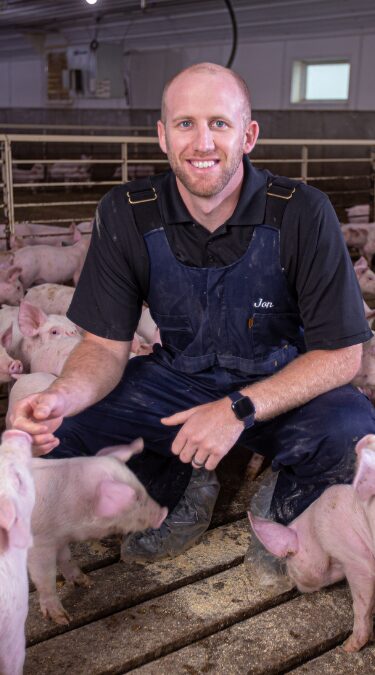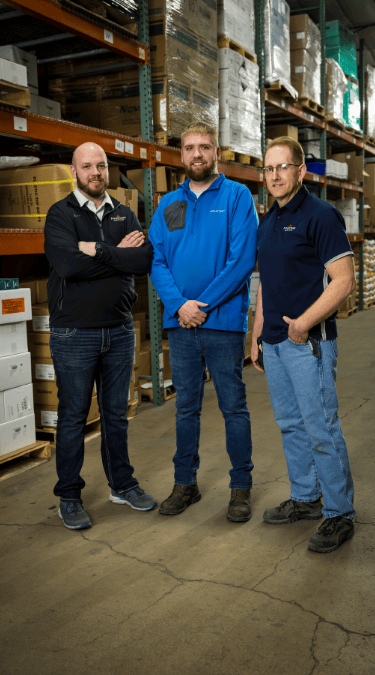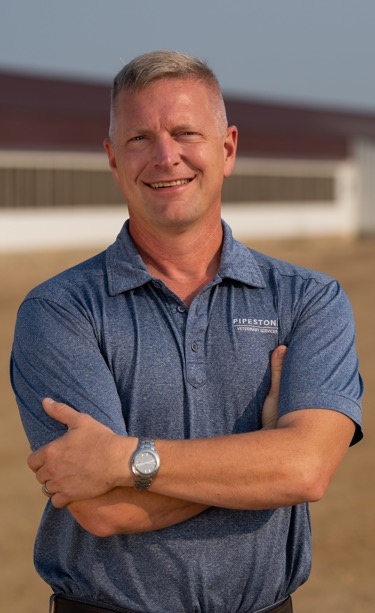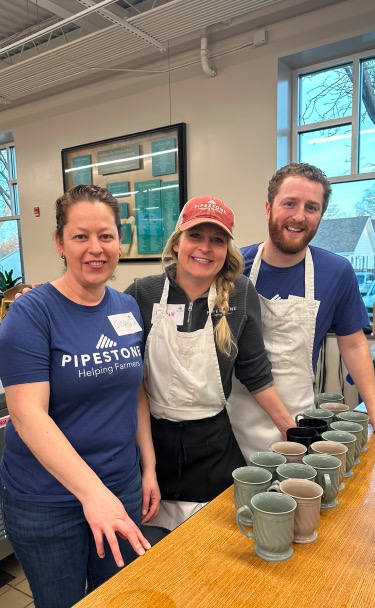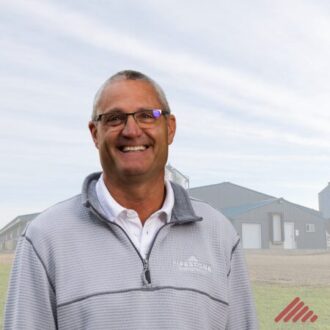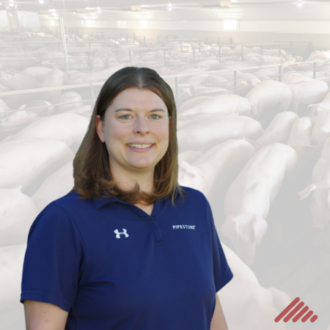It is that time of year again when viruses are well preserved in the environment during the cool winter months, and pigs experience their greatest health challenges due to porcine reproductive and respiratory syndrome virus (PRRSv) and porcine epidemic diarrhea virus (PEDv).
It is predictable: harvest ensues, crops come out of the fields, pits are pumped, and manure is applied (along with any pathogens still active at the time). Then comes the drop in ambient temperatures, and health issues in the barns ramp up again—this is when those practicing good biosecurity outcompete others.
Movement of viruses in cool weather is common, as pathogens can be mechanically transported long distances. In 2002, Dr. Scott Dee led research on the mechanical transmission of PRRSv. This study confirmed that the virus can effectively and efficiently be transported in cool weather on surfaces, including vehicles. This research has since been referred to as “the snowball from hell.” Vehicles pick up debris from road surfaces that can be deposited as live pathogens into new locations (such as a farm’s driveway), particularly when preserved in snow or ice that accumulates during transit.

Every day, hogs are hauled across the United States. Over one million pigs are moved each week. Wean pigs, feeder pigs, culls, replacement breeding stock, and market hogs are consistently transported across the country, as well as internationally. This means a variety of deadly pathogens are deposited across the countryside every day. With the frequency of movements both on and off the farm, it is critically important that basic biosecurity expectations are met for all items, persons, or pigs entering or exiting the facility.
Practicing good, basic biosecurity to prevent pathogen entry does not have to be expensive or complicated—but it does require a growth mindset. Health challenges with PRRSv and PEDv persist in the industry, along with emerging diseases at our doorstep: New World screwworm (NWS) in Mexico, African swine fever (ASF) in China, and Japanese encephalitis virus (JEV) in Australia. New challenges will continue to emerge, and it is important to establish best practices now to protect against the unknown.
Low-cost and simple interventions that protect the primary access points for pathogen entry are essential:
1. People
- Ensure instructions are posted for visitors/contractors.
- Provide a sign-in sheet to track entries.
- Change into farm-specific clothing and footwear.
- Shower or, at minimum, wash hands and arms with soap and water before entering live hog areas.
- Wear disposable gloves when working with pigs, as it can be difficult to effectively clean under fingernails.
- Disinfect cell phones that are brought into the barn after leaving the site.
2. Supplies
- Designate an area and develop a routine process for how items are brought in.
- Discard cardboard shipping boxes, remove items, disinfect, and/or allow downtime before entry.
- Maintain farm-specific supplies; do not transfer items that touch pigs between sites (e.g., moving boards, syringes, troughs, pans) without complete cleaning, disinfection, and downtime.
3. Transport
- A clean trailer with fresh bedding upon arrival prevents massive pathogen transmission. Dirty market trailers can bring any and all diseases that exist at the slaughter plant back to the farm (a blow-out of old bedding and a basic wash is better than nothing at all).
- Apply disinfectant to the back of wean, cull, and market hog trailers as they back up to the chute to help reduce pathogens present.
- Clean and disinfect the chute and ramp after all live pig movements; allow to dry (add supplemental heat or fans if needed).
- In breeding farms, enforce a period of isolation after breeding stock arrival to prevent new disease entry.
- Routinely wash and disinfect service vehicles that travel to the farm, and encourage employees to keep their personal vehicles clean as well to reduce the risk of carrying pathogens.
4. Mortality
- A line of separation between inside and outside must be respected to avoid touching the ground or equipment exterior to the facility.
- Utilize a drop point, such as the chute, to avoid pulling carcasses out of the barn.
- Maintain compost, rendering, burial, or incineration areas to prevent wildlife attraction and disturbance, as these animals can transfer pathogens between sites on their hair, fur, or feathers.
As always, focus on what you can control on a day-to-day basis. Everyone’s actions make a difference, and we must empower those around us to be good stewards of animal health. Good biosecurity may take extra time and add formal processes to simple tasks, but bear in mind Benjamin Franklin’s quote: “An ounce of prevention is worth a pound of cure.”

